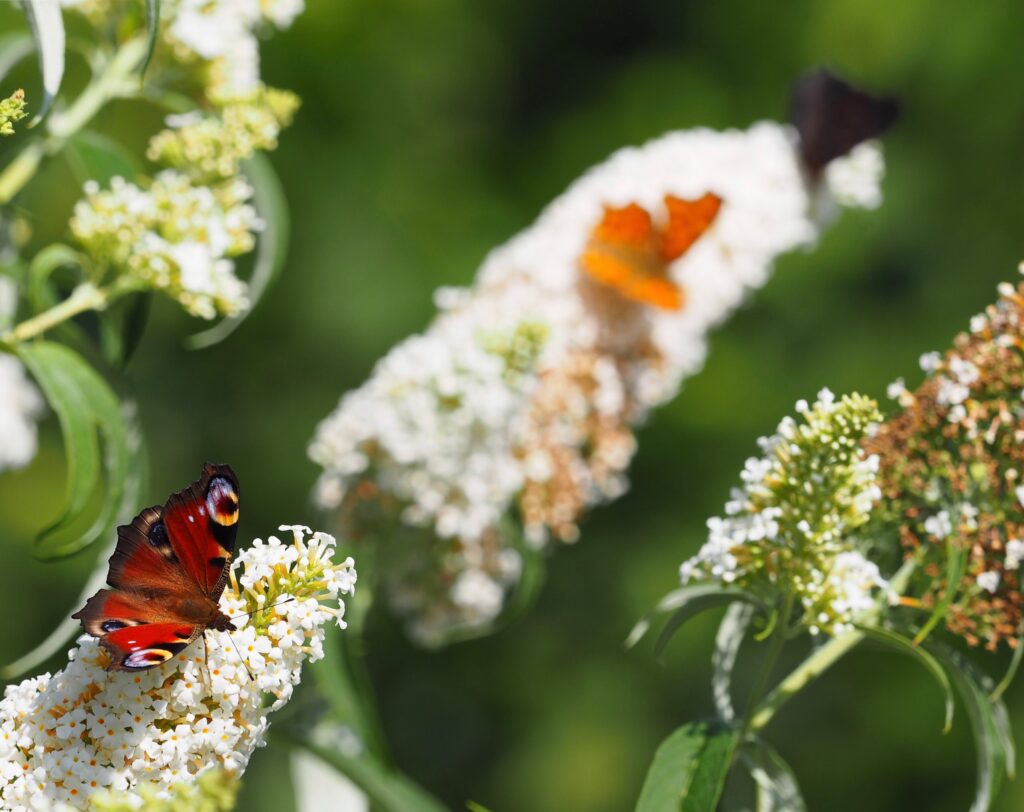Step into a delightful garden where you can embrace pollinators, experiencing the graceful dance of butterflies, the gentle hum of bees, and the enchanting melodies of birds. By crafting a pollinator-friendly haven in the UK, you not only invite these essential creatures into your outdoor sanctuary but also play a crucial role in supporting our precious ecosystem.
Let’s embark on a journey of harmony and beauty, hand in hand with nature’s pollinators, while keeping a watchful eye on the native insects that call the UK their home.
1. Plant Native Flowers: A Taste of Home for Local Pollinators Native flowers are a key ingredient in nurturing a thriving pollinator habitat in the UK. These plants have evolved alongside local insects and offer a bountiful source of nectar and pollen. 🌼Plant Inspiration: Welcome British butterflies like the Painted Lady (Vanessa cardui) with their vibrant orange wings, and charm bees with the delightful scent of the native Wild Foxglove (Digitalis purpurea).
2. Embrace Floral Diversity: A Feast for All Pollinator Senses The UK is home to a diverse range of pollinators, each with unique preferences for flowers. Offer a delightful variety of blooms with different shapes, colours, and fragrances to entice these visitors.
🌸Time-Saving Tip: Plan your garden to bloom throughout the seasons. From early spring Snowdrops to late summer Lavenders, there’s always a delicious treat for our buzzing friends.
3. Quenching Their Thirst: A Welcoming Water Station In the UK, both birds and butterflies need a refreshing drink to thrive. Create a water source, such as a shallow dish with stones, where they can safely sip and cool off during warm summer days.
🕊️Fun Fact: Look out for the distinctive Red Admirals (Vanessa atalanta) among the fluttering butterflies, as they are known to enjoy puddling, gathering minerals from damp soil or mud.
4. Offer Shelter and Nesting Spots: A Pollinator Sanctuary Our British pollinators seek comfort in cosy shelters and nesting opportunities. Enhance your garden with various plants, shrubs, and trees to create diverse habitats.
🌳Garden Myth Buster: Contrary to popular belief, not all bees in the UK are honeybees. Numerous native bees, such as the Red Mason Bee (Osmia bicornis), are solitary and appreciate natural nesting spots like reed stems or hollow plant stems.
5. Embrace Natural Pest Control: A Safe Haven for Pollinators As guardians of pollinators in the UK, it’s crucial to avoid harmful pesticides. Instead, foster natural pest control with companion planting and beneficial insects.
🐞Did You Know?: The beloved Ladybird (Coccinella septempunctata) is a welcome sight in British gardens, as it feasts on aphids that can otherwise harm plants. Encourage these beneficial bugs to make themselves at home in your garden.
A Symphony of Life in Your UK Garden:
By following these steps, you can create more than just a beautiful garden; you’ll cultivate a lively haven buzzing with bees, fluttering with butterflies, and filled with the sweet songs of birds. Embrace pollinators and celebrate the wonders of British nature right in your own backyard.
Together, let’s cherish and protect our pollinator friends, ensuring a harmonious balance in our garden sanctuaries.
#PollinatorGarden #UKGarden #NatureHarmony #BritishPollinators #CelebrateNature

